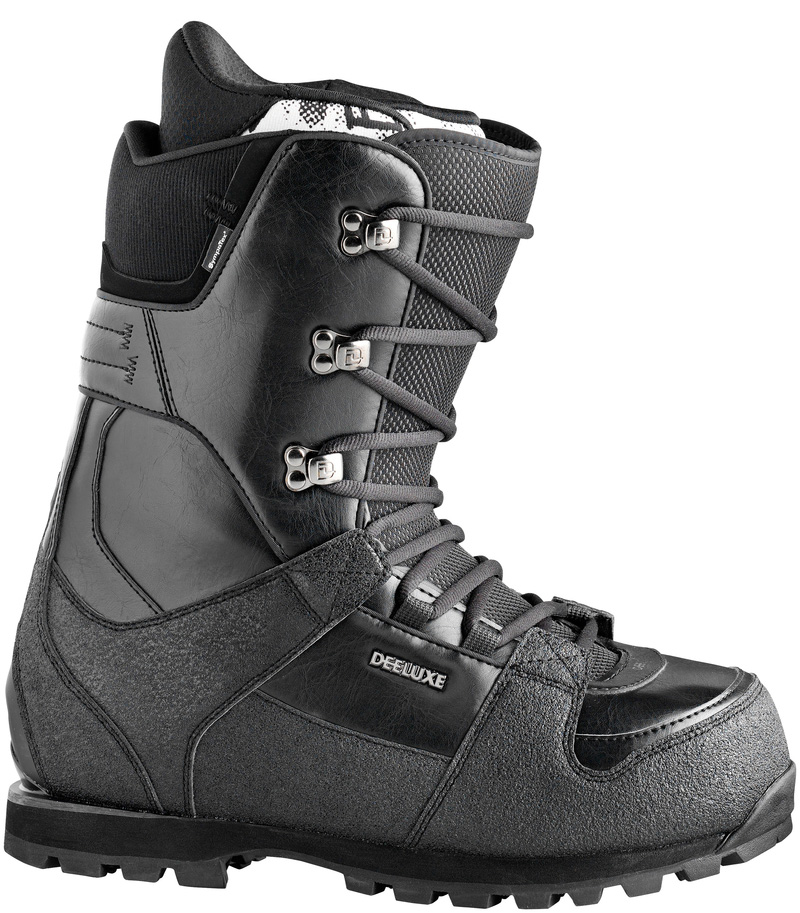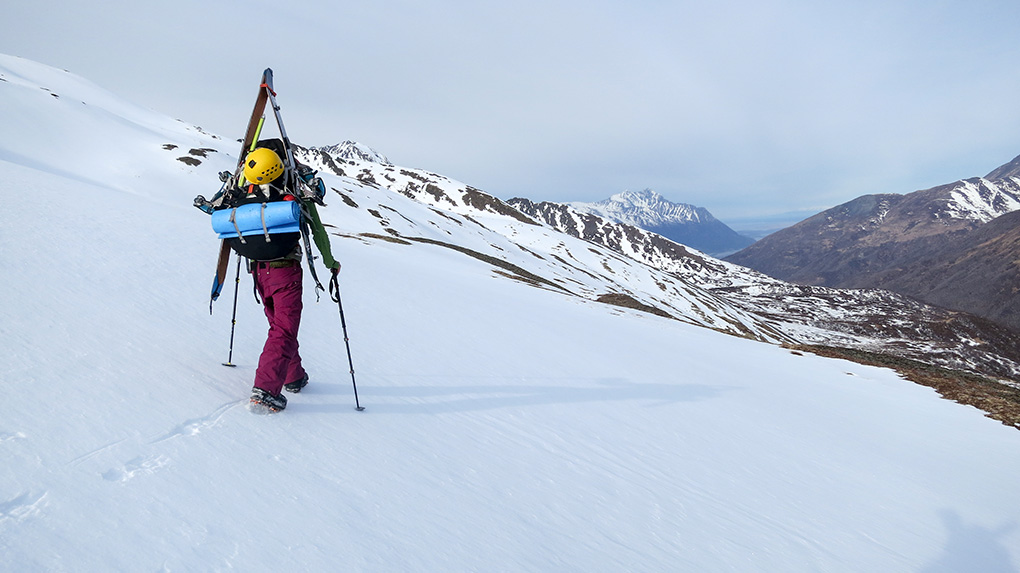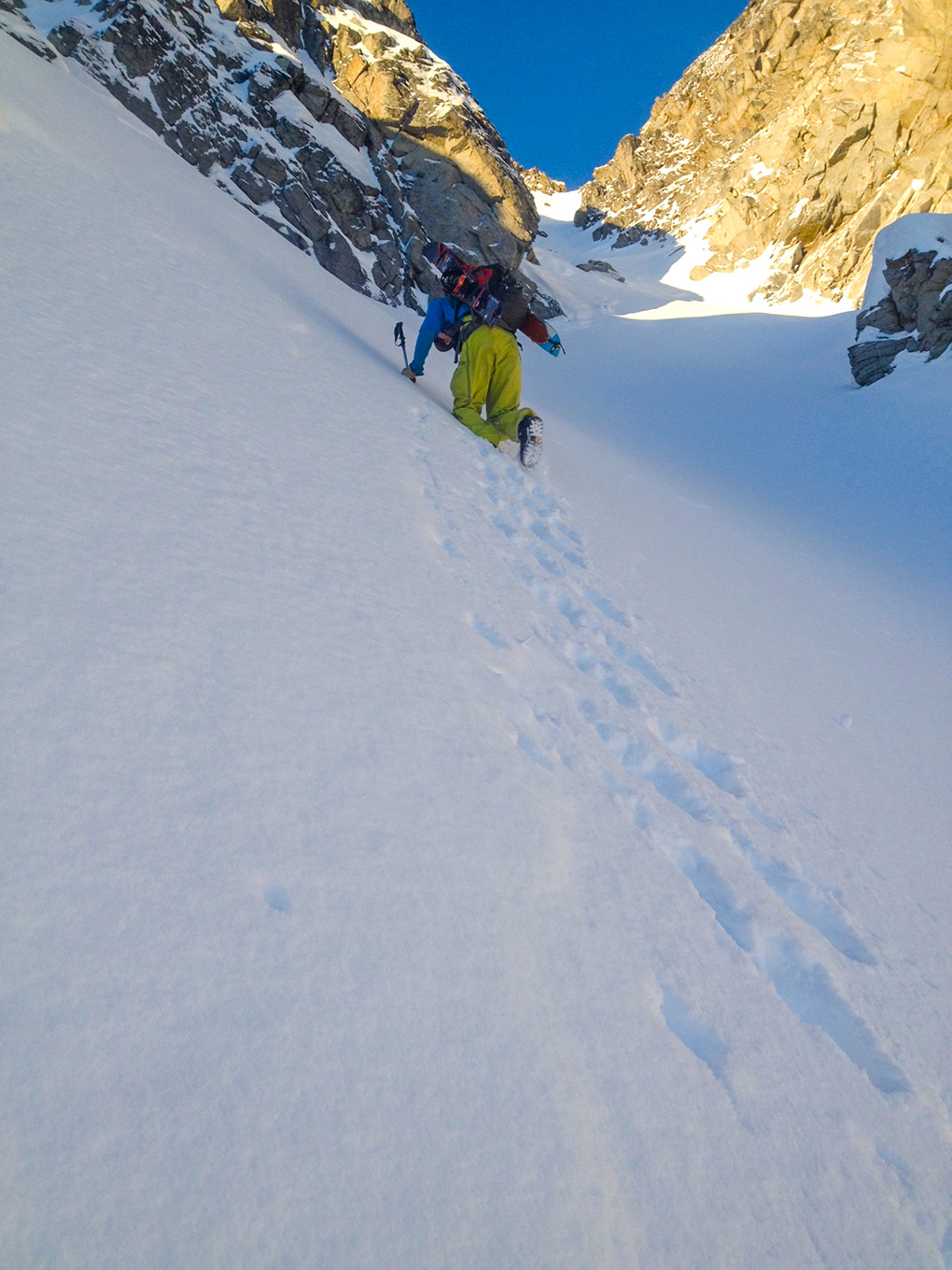
Deeluxe Independent BC Snowboarding Boot
Size Tested: 9.5 US (27.5 MO)
- Stated Features:
- Traditional lace
- Medium flex and response (5 out of 10 on Deeluxe’s scale)
- DuPont Surlyn backstay/ highback
- Sympatex waterproof, breathable membrane
- Waterproof construction
- ThermoFlex liner with ankle harness
- Vibram sole/outsole
- Heel welt (for semi-automatic crampons)
MSRP: $399
Board / Bindings
- 161 Jones Solution Splitboard/Spark R&D Blaze bindings
- 162 Gnu Billygoat Splitboard/Spark R&D Blaze bindings
- 154 Jones Hovercraft/Burton Cartels
- 164 K2 Gyrator/Burton Cartels
Days Tested: 120+
Test Locations: Alaska Range (26-day expedition on the Ruth and Kahiltna), Chugach Mountains (numerous multi-day trips and fly-in), & Talkeetna Mountains, Alaska
[Editor’s Note: This review was conducted on the 2013-14 Independent BC, which returns unchanged for 2015-16]
Introduction
The Independent BC is one of three splitboarding / backcountry specific boots that Deeluxe offers. The Austrian company is one of the few boot developers that has attempted to blend a traditional snowboarding boot with elements of mountaineering boots.
The Independent BC is designed for riding, hiking, and skinning in the backcountry, and has a vibram sole plus a heel welt that supports semi-automatic crampons.
In the spring of 2014, I was looking for a boot to take on a 26-day trip into the Alaska Range, with plans to snowboard and traverse from the the Kahiltna glacier to the Great Ruth Gorge.

I wanted a boot that would (1) withstand the rigors of mountaineering yet (2) still feel like a snowboard boot and (3) be playful enough for typical backcountry days in the Chugach. While this boot is not the ideal tool for the Alaska Range when dealing with long, 50+ degree icy, glaciated slopes typical of alpine starts, the Independent BC is an extremely fun and well thought out boot for day trips in the backcountry that involve boot packing, rocky scrambling, and aggressive riding.
Construction and Lacing
Although Deeluxe only rates the Independent BC as 5 out of 10 on their scale of stiffness, the boot has support in all the right places. The heel welt up to the shaft of the boot (highback) is composed of DuPont’s Surlyn ionomer resin, which is an “ionically strengthened thermoplastic with enhanced physical properties versus conventional plastics,” commonly used in golf balls and ski boots.
The compound is known for its “outstanding resilience, broad hardness and stiffness range, and excellent resistance to cuts and abrasion.” The Surlyn highback adds stability and durability to the boot’s integrity, which in addition to the traditional lacing, allows for a very impressive and customizable fit.
The traditional lacing should not be overlooked. “Quick lacing systems” such as the Boa or Deeluxe’s C3 lacing system can be fine, but I’d tried on the Deluxe XV (Xavier De La Rue pro-model) and couldn’t get the C3 quick lacing system to feel right—I was unable to get the lower section of the XV tight enough near the arch and heel without causing discomfort on pressure points on either side of my arch. Your feet may feel differently, but I’ve appreciated the traditional laces on the Independent BC.
Fit
I transitioned from predominantly using the Nike Kaijus to the Independent BC, and I found Nike and Deeluxe sizing to be similar—they both seem to run a little larger than ThirtyTwo Ultralights. I typically wear a size 9.5 in Nike, Deeluxe and Scarpa, and a size 10 Thirty-Two shoe and boot. I ordered the Independent BC in both a size 9.5 and 10, and ended up keeping the 9.5.
Vibram Sole / Outsole
One of the most attractive features of the boot to me is the Vibram sole. And although it is not necessarily fair to compare mountaineering boots and snowboard boots (mountaineering boots are the epitome of alpine footwear with aggressive traction), it does help give a nice reference for how a boot should perform on the ascent.
I am accustomed to the fit and performance of the Scarpa Mount Blancs, which proved to be beneficial when comparing its build and specific features to the Independent BC. First, the Mount Blanc has a noticeably smaller footprint and sharper shape than the Independent BC. The Mount Blanc is much better at penetrating ice (with and without crampons) due to the size and shape of the toe, while the Independent BC is much warmer, softer, and bulkier, since the boot needs to fill the binding while cushioning the shin and calf.
The Deeluxe Vibram soles have a different tread and perform exceptionally well on hardpack, rock, and mud, making the Independent BC one of the most secure snowboarding boots I have ever used. The sole offers protection on icy climbs and the durability to withstand 10+ miles per day of hiking with expedition-weight packs. The difference between the Vibram sole and any other boot I have used was impressive. Although most resort style boots, such as the Nike Kaiju, are considerably lighter due to the use of more foam and a decreased amount a rubber, the confidence the Vibram sole gives on exposure is well worth a bit of extra weight.

However, the Vibram sole features a heel lug that is much higher than most snowboarding boots. The additional lift took some getting used to, and initially caused a lot of cramping and pain from the increased pressure on the ball of my foot. It was first really noticeable when touring 11 miles along a flat, rolling valley floor into the Chugach Mountains. In addition to the fact that I was pulling a sled, the slightly forward stance caused some of the worst pain I have ever had from boots. But after a few more days and miles, my feet got use to the the change in stance, which turned out to be nice for hiking. With a more forward stance, I feel as though my hips are pushed into the slope more, and are ultimately more comfortable.
The sole is quite different from most all mountain / freeride boots, which are typically flat to achieve a “planted” feel in the binding for maximum board sensitivity. The Deeluxe, however, features a rockered sole both at the heel and toe. The large heel lug acts as a critical pivot point for responsive edging. Although it is different from what I am accustomed to (and required a significant break-in period for me), it works extremely well.
NEXT: Liner, Waterproofing, Etc.
